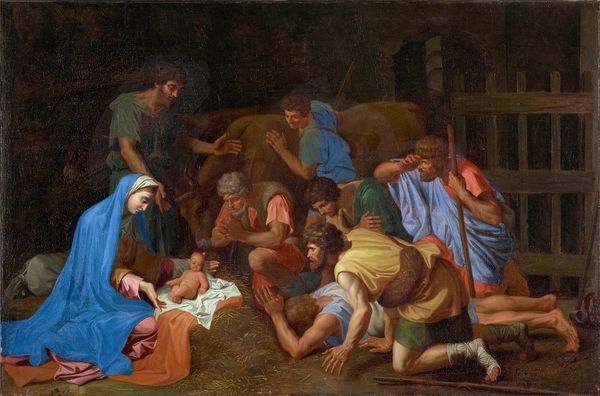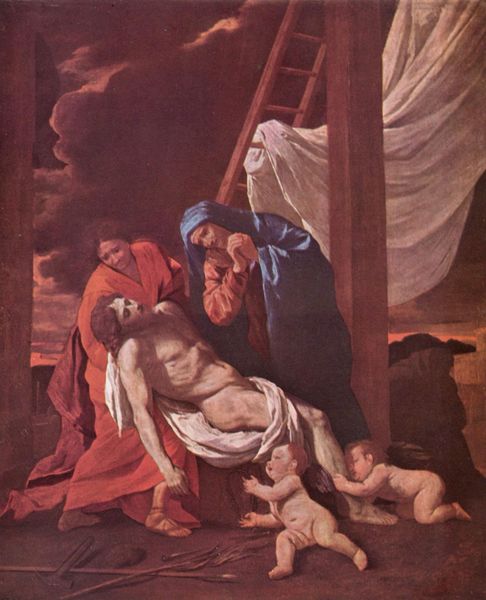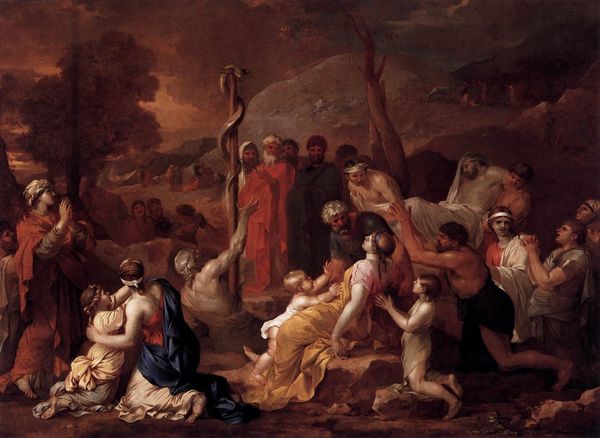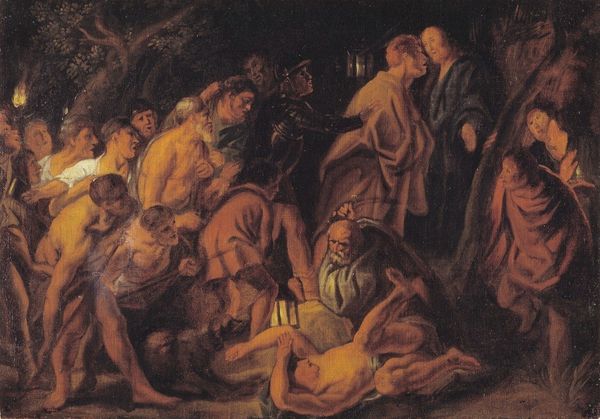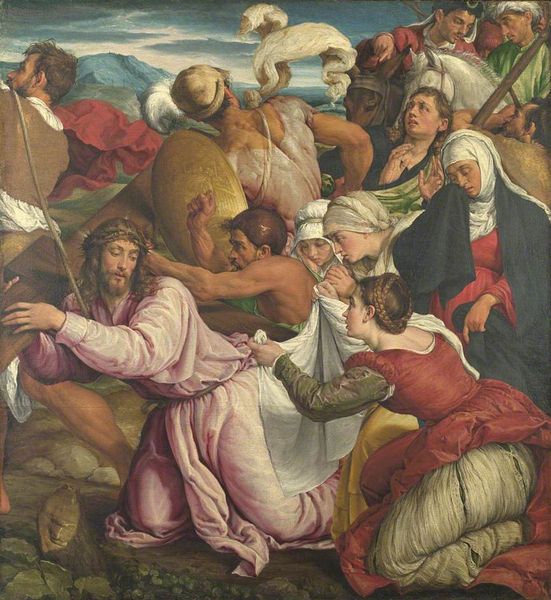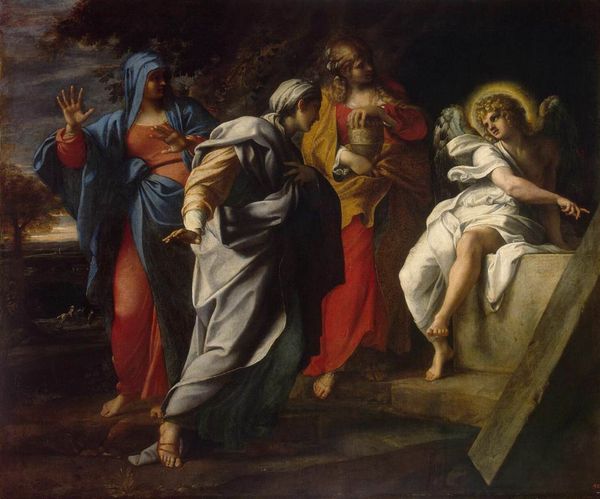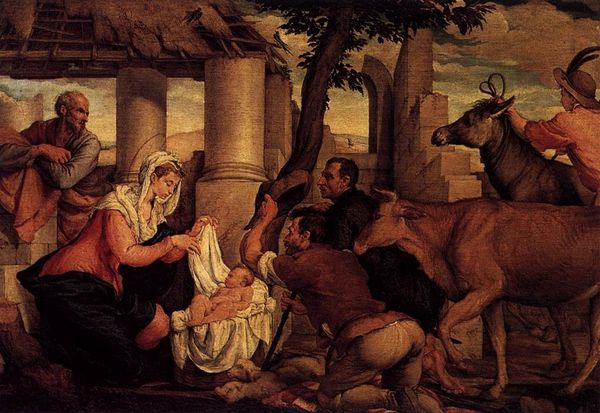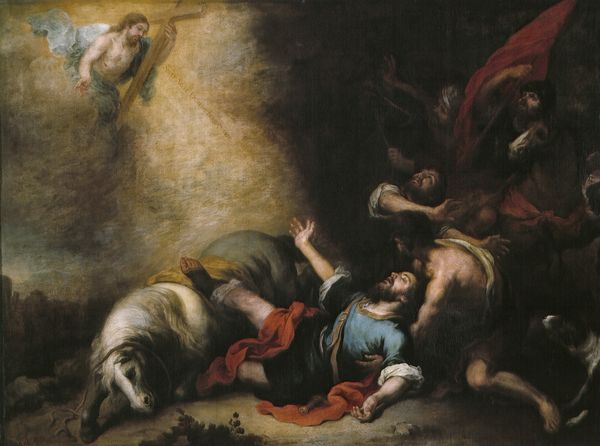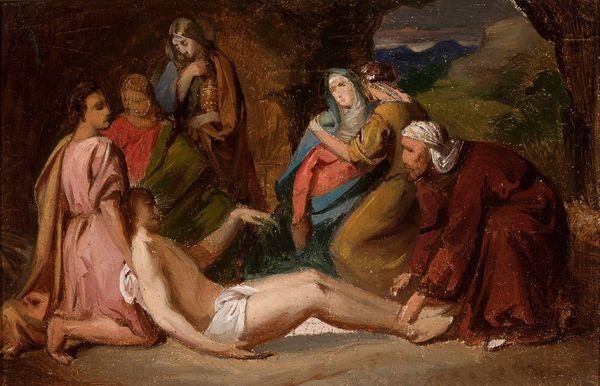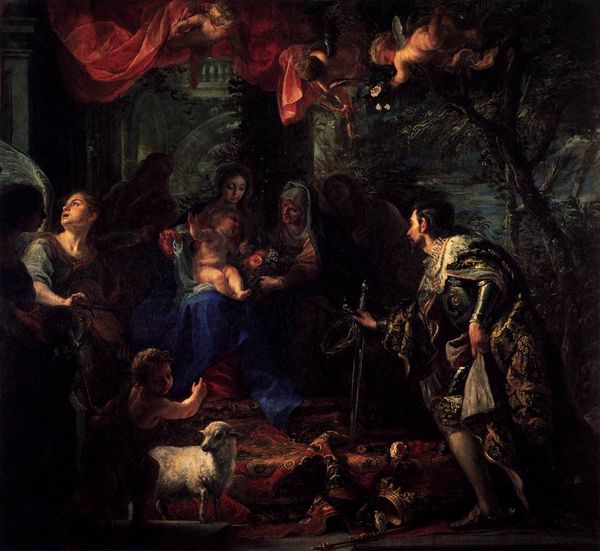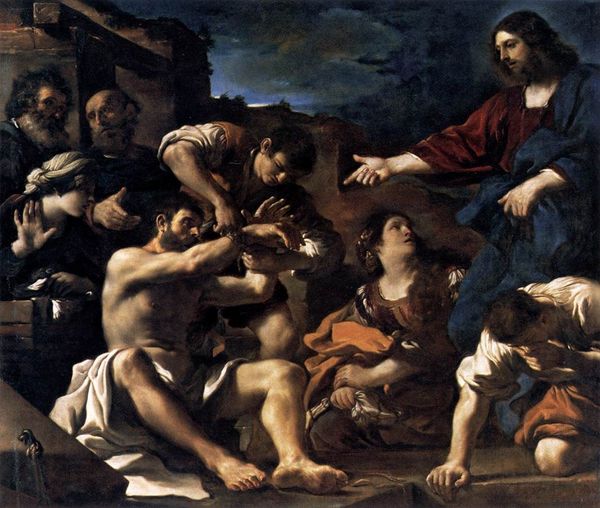
painting, oil-paint
#
portrait
#
baroque
#
painting
#
oil-paint
#
figuration
#
oil painting
#
jesus-christ
#
christianity
#
history-painting
Dimensions: 101 x 145 cm
Copyright: Public domain
Editor: We're looking at Nicolas Poussin’s "Lamentation over the Body of Christ," created in 1629. It's an oil painting that immediately strikes me as intensely mournful, yet there’s a restrained classicism in the composition. How do you interpret this work, considering its historical and cultural context? Curator: It's more than just mournful, isn't it? Poussin, working in the Baroque period but heavily influenced by classicism, uses this scene not just as a religious depiction but also to engage with complex power dynamics. Look at how the women are positioned around Christ, displaying grief in various ways, pointing to different roles and societal expectations imposed on them in the 17th century. Do you see echoes of classical sculpture in their poses? Editor: Yes, I see the echoes of classical sculpture, the carefully arranged drapery and idealized figures. But how does that engagement with classicism intersect with the painting's social commentary? Curator: Consider the Counter-Reformation’s impact on art. Paintings like these were meant to inspire piety but also subtly reinforce existing social hierarchies. The women's emotional displays, while seemingly individual, conform to pre-determined scripts of female behavior within a patriarchal structure. Poussin doesn’t necessarily critique this outright, but he presents a staged reality, inviting us to consider these societal frameworks. How does Poussin negotiate power within faith, would you say? Editor: That's fascinating. It makes me consider the limited agency women were allowed and how even grief became a performance. It adds layers of complexity to what initially seemed like a straightforward religious scene. Curator: Exactly. It's not just about faith; it’s about how societal forces shape the way we experience and express even the most personal emotions. Poussin, in this work, offers a reflection on faith, gender, and social structure that’s worth excavating. Editor: Thank you. I’m walking away seeing beyond the surface and considering the intersectional layers of history and power within Poussin's lament. Curator: Likewise, revisiting this with you helped highlight nuances that I had overlooked before. It underlines the continuing value of critical engagement.
Comments
No comments
Be the first to comment and join the conversation on the ultimate creative platform.
